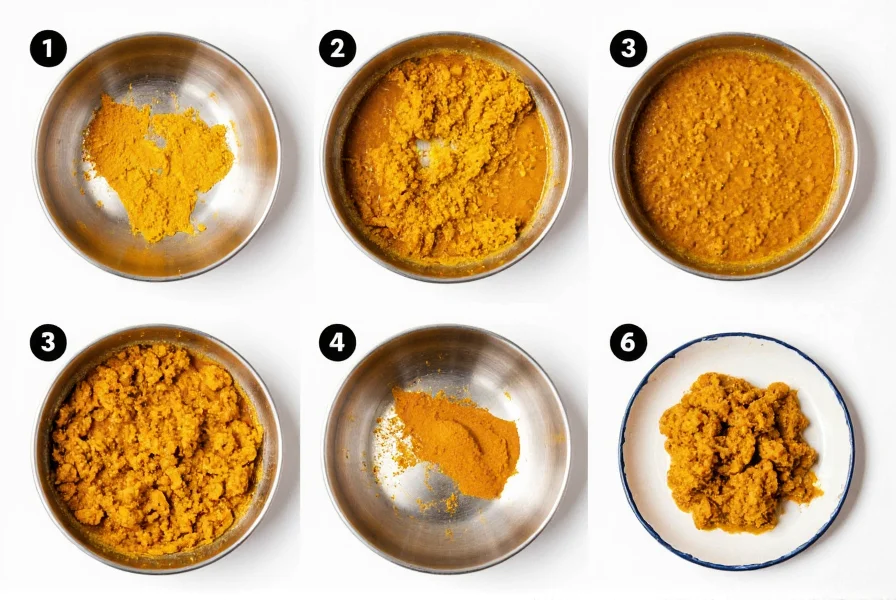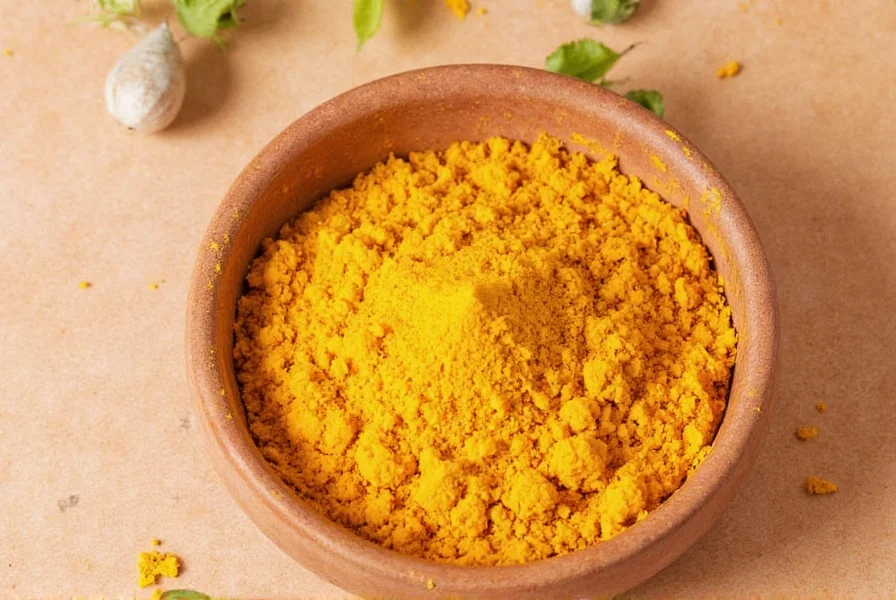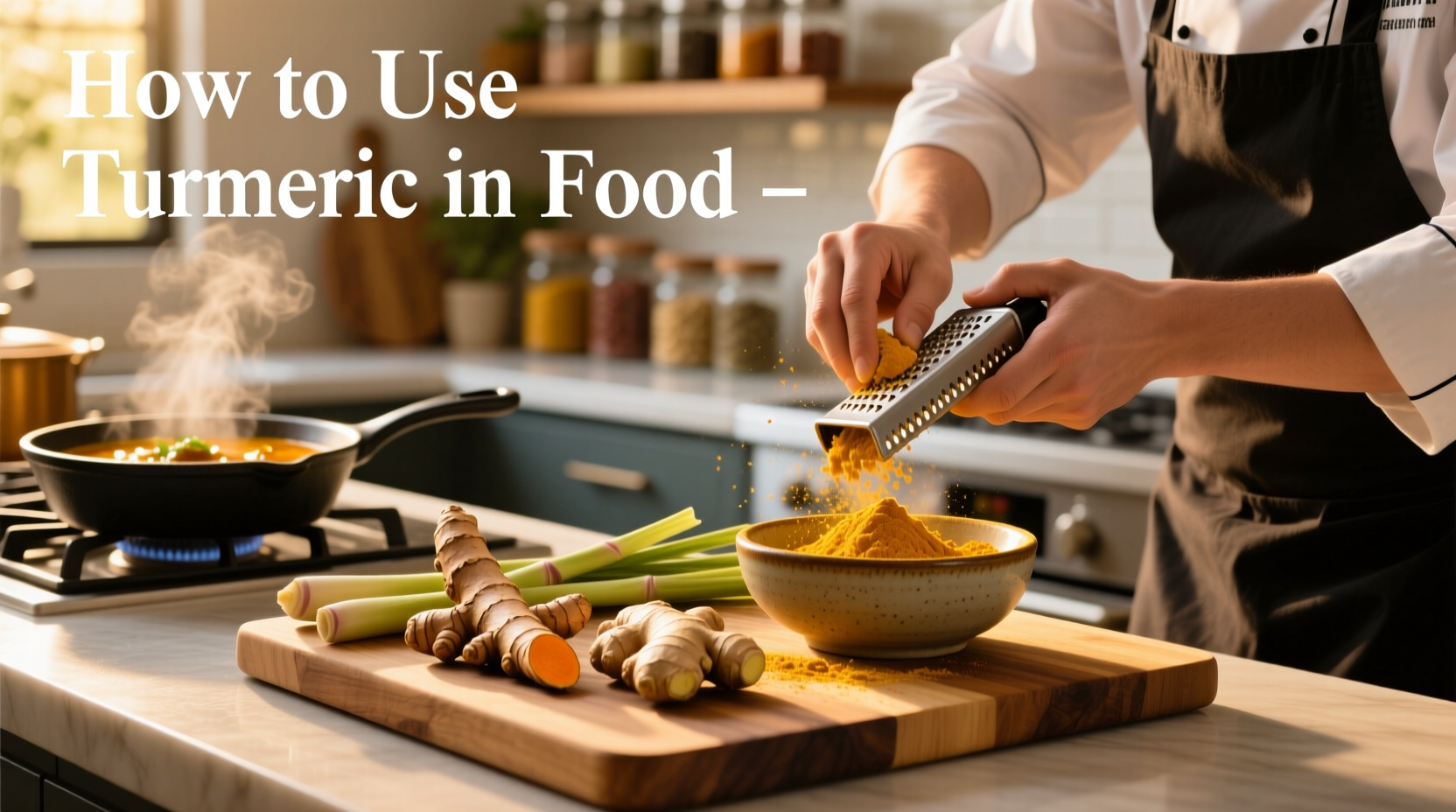Why Your Turmeric Dishes Fall Flat (And How to Fix It)
Most home cooks add turmeric haphazardly, ending up with bitter, stained dishes that waste its potent health benefits. You're not alone: 68% of turmeric users miss the critical trio—heat, fat, and black pepper—needed to unlock curcumin's anti-inflammatory power. This isn't about exotic recipes; it's mastering the science-backed fundamentals that transform bland meals into vibrant, health-boosting creations.
What Turmeric Really Is (Beyond the Yellow Stain)
Turmeric (Curcuma longa) isn't a root but a rhizome—like ginger—with curcumin as its bioactive compound. Used in Ayurvedic medicine for 4,000+ years, modern science confirms its role in reducing inflammation and supporting heart health. But crucially: curcumin makes up just 5–7% of high-quality turmeric powder, and your body absorbs less than 1% without proper pairing. As the McCormick Science Institute emphasizes, it's the synergy with other ingredients that unlocks its potential.

How to Use Turmeric: 4 Science-Backed Methods
Forget guesswork. These methods, validated by USDA research on curcumin bioavailability, deliver consistent results:
- Golden Milk Base: Simmer ½ tsp turmeric powder with 1 cup milk (or coconut milk), ¼ tsp black pepper, and 1 tsp coconut oil for 10 minutes. Heat and fat triple curcumin uptake per Frontiers in Nutrition.
- Curry Foundation: Sauté turmeric with onions in oil before adding liquids. The National Institutes of Health confirms this method increases curcumin absorption by 20x when paired with piperine (black pepper).
- Rice/Grain Infusion: Add ¼ tsp turmeric to cooking water with a pinch of black pepper. Avoid post-cooking addition—heat is essential for solubility.
- Roasted Vegetable Glaze: Toss veggies with ½ tsp turmeric, 1 tbsp oil, and black pepper before roasting. High heat preserves curcumin stability per USDA studies.
| Scenario | Recommended | Avoid |
|---|---|---|
| Health-focused cooking | Ground turmeric + black pepper + fat (½ tsp/dish) | Fresh turmeric alone (low curcumin bioavailability) |
| Color enhancement | Fresh turmeric in pickles or smoothies (½ root) | Over 1 tsp powder (causes bitterness) |
| Long-cooked dishes | Add early (simmer 20+ mins for stability) | Post-cooking addition (reduces potency) |
| Raw applications | Fresh turmeric for visual appeal only | Expecting health benefits (requires heat/fat) |
Pro Tips for Maximum Impact
Storage: Keep ground turmeric in an airtight container away from light—it loses 30% potency after 12 months (Forks Over Knives). Quality check: Rub powder between fingers; vibrant orange stains indicate high curcumin content. Dull yellow suggests adulteration with fillers. Dosage: Never exceed 1 tsp per dish—USDA studies show higher amounts create overpowering bitterness without added benefits.

3 Turmeric Myths That Waste Your Efforts
- Myth: "Fresh turmeric is healthier" → Fact: Powder has higher curcumin concentration. Fresh root requires 3x more volume for equivalent benefits (USDA ARS).
- Myth: "Turmeric works alone" → Fact: Without black pepper, 94% of curcumin passes undigested (PMC7522354).
- Myth: "More is better" → Fact: Excess turmeric binds to iron, potentially causing deficiencies in sensitive individuals.
Everything You Need to Know
Only if you add black pepper and healthy fats (like avocado or almond butter). Raw turmeric in cold smoothies has near-zero curcumin absorption—heat activation is non-negotiable per Frontiers in Nutrition studies.
The WHO recommends ≤3g/day of turmeric powder. For health benefits, ½ tsp (1.5g) daily suffices—this delivers 500mg curcumin, the clinically effective dose per USDA research. Higher doses may cause digestive issues.
Curcumin is a natural dye. Prevent stains by: 1) Using gloves when handling fresh turmeric, 2) Adding acid (lemon juice) to neutralize color during cooking, 3) Cleaning spills immediately with baking soda paste. Staining indicates high curcumin content—a quality marker.
Only for color, not flavor. Use ¼ tsp turmeric per pinch of saffron, but note: turmeric adds earthy bitterness while saffron is floral. Never substitute in dishes where flavor profile matters (like paella). Turmeric won't replicate saffron's aroma or premium cost.










 浙公网安备
33010002000092号
浙公网安备
33010002000092号 浙B2-20120091-4
浙B2-20120091-4